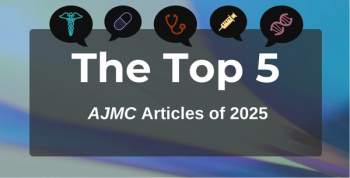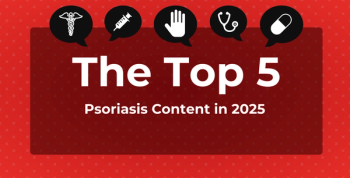
Risk Predictive Model May Aid Providers in Diagnosing IPA in AECOPD
A study evaluating independent risk factors for invasive pulmonary aspergillosis (IPA) in hospitalized patients with acute exacerbations of chronic obstructive pulmonary disease (AECOPD) validated a potential model that could help providers diagnose IPA earlier.
A risk predictive model in hospitalized patients with acute exacerbations of chronic obstructive pulmonary disease (
The retrospective single-center study aimed to develop and validate the first risk predictive scoring model for IPA, which can be difficult to diagnose in patients with COPD because current laboratory tests are not useful in nonneutropenic populations and may lead to delays in IPA diagnoses.
In recent years, research has shown that worse lung function, such as patients with a COPD severity of 3 or 4 as determined by the Global Initiative for Chronic Obstructive Lung Disease (GOLD) criteria, and systematic usage of corticosteroids are significant risk factors of IPA in patients with COPD. Studies have also found that chronic heart failure and use of antibiotics for longer 10 days in 3 months are predictors of IPA.
“The identification of one or more predisposing conditions would be critical to trigger further diagnostic exploration, which is a benefit to the early diagnosis and treatment,” wrote the investigators.
The investigators gathered clinical records for 1277 patients with AECOPD hospitalized between January 2012 and December 2017 at the Department of Respiratory and Critical Care Medicine of Jinling Hospital in Jiangsu, China, of whom 880 were enrolled. The patients were randomized into a training set (70%; n = 616) and an internal validation set (30%; n = 264).
In total, there were 83 cases of IPA (9.4%), with an average (SD) age of 75.2 (10.7). In the training set, 59 (9.6%) patients were diagnosed with IPA and 24 (9.1%) patients with IPA were in the validation set. Among all the IPA cases, 13 patients were diagnosed with proven IPA and 60 were determined to have probable IPA.
Compared with the non-IPA group, the IPA group was significantly more likely to have received serum albumin quantities of less than 30 g/L (21.9% vs 49.2%), have GOLD stage 3 or 4 (63.4% vs 94.9%), have used broad-spectrum antibiotic longer than 10 days during the month prior to admission (5.0% vs 28.5%), and have used oral or intravenous corticosteroids in the 3 months prior to admission (7.4% vs 30.5%), respectively.
To develop the risk predictive model, a multivariate logistic regression analysis was conducted, revealing 4 independent risk predictive factors for IPA, including GOLD stage 3 or 4, use of at least 265 mg of a corticosteroid (prednisone) 3 months prior to admission, use of antibiotics longer than 10 days in the past month, and use of less than 30 g/L of serum albumin.
The nomogram model, which is a simple and visual prediction model that combines several indicators for the purposes of diagnosis or disease prediction, showed a positive net benefit when evaluating the training and validation sets for predicted risk thresholds between 0% and 53%.
“The nomogram developed in this study may be useful for clinicians in evaluating the risk of COPD patients complicating IPA, further methods for diagnosing IPA will be actively pursued,” wrote the investigators.
The study had some limitations, including that the study was only internally validating the discrimination and calibration of the scoring model. Additionally, the severity of COPD in combination with cormorbidities could not be examined because the comorbidities were classified based on a binary positive/negative scale.
“Further studies are needed to validate the application of the nomogram in clinical practice to determine whether IPA can be better predicted,” concluded the investigators.
Reference
Gu Yi, Ye X, Liu Y, et al. A risk-predictive model for invasive pulmonary aspergillosis in patients with acute exacerbation of chronic obstructive pulmonary disease. Respir Res. June 9, 2021;22(176). 10.1186/s12931-021-01771-3
Newsletter
Stay ahead of policy, cost, and value—subscribe to AJMC for expert insights at the intersection of clinical care and health economics.








































